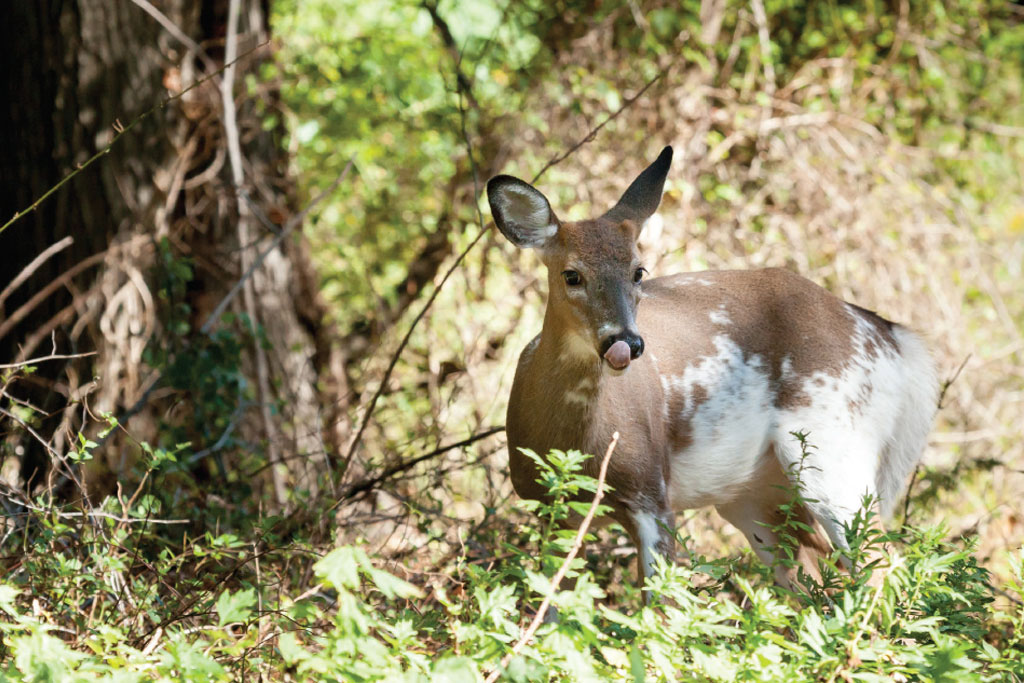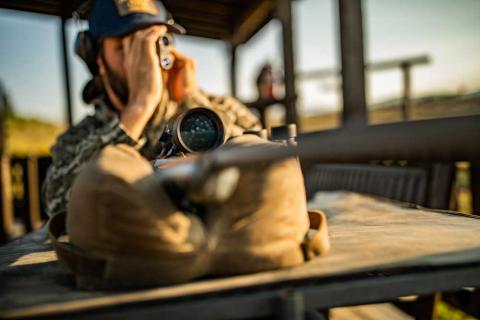Austin Delano

“White deer.” Just mention those two words around a deer camp or any gathering of hunters and you are sure to get some stories going. There is something mysterious and very intriguing about a white whitetail deer in the wild. Very few hunters have actually seen the mystical white deer in the wild. With many hunters using social media these days, those lucky enough to see one on a game camera are posting pictures of it on social media. For many of us, that may be as close as we get. They are so rare that Native Americans even believed they were magical and bad luck to kill. Would you harvest a white deer if given the chance? Before you answer that question, let's look a little further into the world of the white deer.
Is It an Albino or Piebald Deer?
By definition, an albino deer is totally absent of body pigment and is solid white with pink eyes, nose, and hooves. Often confused with an albino, a piebald deer is slightly more common and is also a genetic mutation. Piebald deer can have varying amounts of white hair. Some piebald deer can be almost pure white except small patches of regular brown hair, while others carry just patches of white hair with otherwise normal markings. Otherwise, an albino or piebald white-tailed deer will have the normal characteristics of other white-tailed deer.
Albinism is a recessive genetic trait that is found in animals where the gene responsible for hair, tissue, or skin coloration is missing. By definition, this is why they have no body pigment. Since albinism and piebaldism are recessive traits, both parents must carry the trait to have albino or piebald offspring. The genes responsible for piebald and albino deer are not dominant and oftentimes the deer carrying these genes are biologically inferior to others in the deer herd.
So if an albino buck were to breed a doe that is not, they could only have an albino offspring if she carried the recessive genes for albinism. These offspring would carry the recessive gene but would have normal pigmentation. When two whitetails breed that carry the recessive genes, they have around a 25 percent chance of producing an albino fawn. Research says that your chances of seeing an albino in the wild are about one in 30,000, although there are some areas in the north that seem to have higher occurrences of true albino whitetails.
The Rare White Deer
Studies show less than two percent of whitetails are piebald and are pretty rare to come across, but a true albino is even less likely. Since whitetails are a prey species, being solid or mostly white carries some disadvantages. Not only are piebald and albino deer highly visible to predators and hunters from the day they are born, they are often born with physical abnormalities such as arched spines, deformed hooves, shortened jaws and short legs. Albino and piebald deer are easily seen by predators and when traveling with the rest of the deer herd, these deer make the entire herd easy to spot.
Albino deer also often have vision deficiencies. With the handicaps that being a mostly white deer may have, it can be rare for one to reach maturity or even more so, old age. Some states protect albino deer populations from harvest such as Minnesota, Tennessee, Illinois, Wisconsin and Iowa. Even piebald deer with more than 50 percent white hair are protected in Iowa and the same for Montana with more than 75 percent.There is the rare case where an albino or piebald deer lives to maturity and seems to be in good health without any major deformities. One thing is for sure — they are easy to identify in trail cam pictures among all the other deer that they interact with.
If you are blessed to see a piebald or albino deer in the wild, count yourself lucky. They are a rare and beautiful sight. The closest many of us may get to the mystical white deer is seeing one on social media. Still, the conversation around deer camps from New York to Wisconsin is: Have you ever seen an albino or piebald deer? It is followed up with the age-old question: Would you shoot it if you did? For many hunters, the laws of the land have made that decision for them, but it is a fun question to ponder. Would you enjoy the rare sight of a white deer and then let it wander off for others to enjoy, or would you put that deer on the wall to enjoy for years to come?
Are you prepared for spring? Read “3 Tips To Prepare For Spring And Summer.” One of the first things I like to do in February and March is pull soil samples on my plots and get them sent in to see if I need to add any lime and see what fertilizer will be needed for my warm season annuals that will be planted in late April/early May. If you had soil samples taken this fall, you will already have an idea of where your plots are in needing lime or nutrients. Have an up-to-date sample of the areas you plan to plant this spring and if the ph is low, have lime spread in the late winter/early spring.































